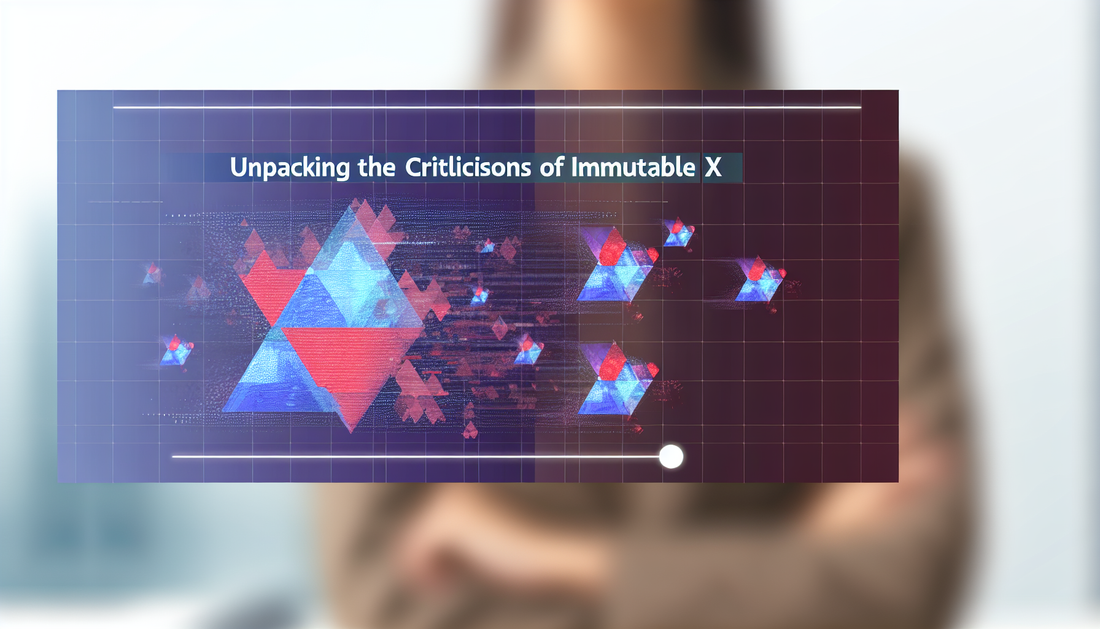
Unpacking the Criticisms of Immutable X
Share
Biggest Criticisms of IMX (Immutable X)
Immutable X (IMX) has gained significant attention in the crypto space, largely due to its focus on improving the scalability issues of Ethereum-based NFTs. While the platform paints an appealing vision of a scalable and eco-friendly NFT marketplace, it has not escaped criticism. Below, we will delve into the most prominent criticisms facing IMX.
1. Centralization Concerns
Although IMX operates on Ethereum, a decentralized blockchain, some critics argue that its Layer 2 solution introduces centralization at several points. Immutable X uses a centralized sequencer to manage transactions before they are committed to Ethereum. This introduces a single point of control and could result in concerns around censorship or transaction prioritization. For decentralization purists, this is viewed as a step backward from Ethereum’s native ethos.
2. Limited Adoption
Another key criticism of IMX is its limited adoption within the broader NFT ecosystem. While the platform boasts partnerships with major projects such as TikTok and Gods Unchained, the marketplace is small compared to giants like OpenSea and Rarible. The relatively low number of projects and users makes it hard for traders and collectors to find a wide variety of NFTs. This limitation in adoption has led many to question whether the platform will ever scale to a size where its network effects become significant.
3. Competition with Other Layer 2 Solutions
Immutable X is not the only Layer 2 solution aiming to tackle Ethereum’s scalability issues. Rivals like Polygon, Arbitrum, and Optimism also provide Layer 2 scaling solutions that target different sectors of the Ethereum network, often with more prominent adoption or superior technological approaches. Many critics are skeptical about whether IMX can distinguish itself in this crowded market, especially considering the fast-paced development of Ethereum’s own upcoming Layer 2-friendly improvements.
4. Dependency on Ethereum
Despite positioning itself as a Layer 2 solution, IMX remains heavily dependent on the Ethereum network. Gas fees, network congestion, and potential future forks in Ethereum could directly impact IMX’s operations. While the platform was designed to alleviate gas fees for NFT minting and trading, any severe issues within the underlying Ethereum blockchain could hinder its effectiveness. This dependency presents an operational risk that could affect the long-term performance of IMX.
5. User Experience Issues
Despite claims of a seamless user experience, there have been critiques regarding the complexity of using IMX for newcomers. Users unfamiliar with Layer 2 technology may find it hard to navigate the platform, especially since it involves a process of bridging assets from Ethereum to the Immutable network. These usability concerns can create a steep learning curve, discouraging mass adoption among the general public.
